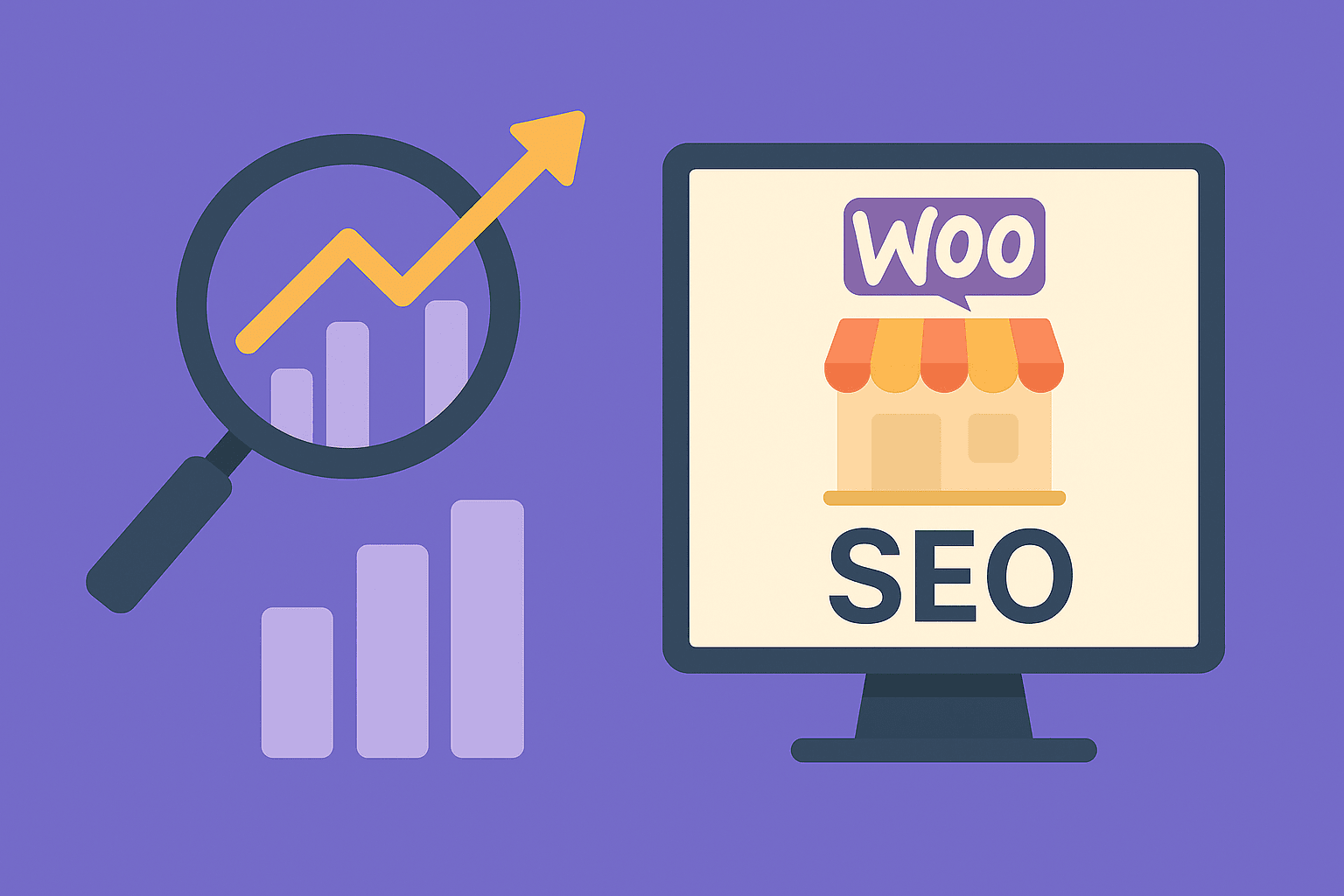Introduction
E-commerce continues to dominate in 2025, with more businesses moving online every day. While WooCommerce gives store owners powerful tools to sell online, success ultimately depends on visibility. If your products don’t appear in Google search results, potential customers won’t find you.
That’s where WooCommerce SEO comes in. Optimizing your store for search engines increases your organic traffic, reduces ad spend, and builds long-term visibility. In this guide, we’ll explore proven strategies for WooCommerce SEO in 2025—from product optimization to technical improvements and content marketing.
1. On-Page SEO for WooCommerce Products
Your product pages are the lifeblood of your store. Optimizing them for SEO ensures search engines (and customers) understand exactly what you’re selling.
Product Titles and Meta Descriptions
- Write clear, keyword-rich product titles.
- Avoid keyword stuffing—use natural language.
- Write unique meta descriptions (under 155 characters).
💡 Example: Instead of “Shoes – Model 123”, use “Men’s Running Shoes with Breathable Mesh | Lightweight Sneakers 2025”.
Product Descriptions
- Write unique, detailed descriptions. Never copy manufacturer text.
- Include long-tail keywords naturally.
- Break content into sections with bullet points for readability.
Product Images and Alt Text
- Use high-resolution images in WebP or AVIF format for faster loading.
- Add descriptive alt text (helps with SEO and accessibility).
- Example: “Black leather women’s handbag with gold zipper – WooCommerce store product image”.
Reviews and Ratings
- Enable product reviews—they add fresh, user-generated content.
- Use schema markup so star ratings appear in search results.
2. Technical SEO for WooCommerce
Search engines prioritize websites that are fast, secure, and easy to crawl.
Site Speed and Core Web Vitals
- Use a lightweight WooCommerce theme (Astra, GeneratePress, Kadence).
- Optimize with caching plugins like WP Rocket or LiteSpeed Cache.
- Compress images and enable lazy loading.
- Use a CDN like Cloudflare or QUIC.cloud.
Mobile-First Optimization
Google indexes mobile versions first. Ensure checkout, product pages, and menus are fully responsive.
Site Structure & Navigation
- Use SEO-friendly URLs:
- Good:
/shop/men-running-shoes - Bad:
/product?id=1234
- Good:
- Organize products into logical categories and subcategories.
- Use breadcrumbs for better navigation and SEO.
Schema Markup
WooCommerce + SEO plugins (Yoast, Rank Math) can add schema for:
- Product details (name, price, availability).
- Reviews and ratings.
- FAQ sections on product pages.
This increases chances of rich snippets in search results.
3. Content Marketing for WooCommerce SEO
SEO isn’t just about product pages. A strong content marketing strategy brings in new traffic and establishes authority.
Blogging for E-Commerce
Write posts targeting buyer-intent keywords like:
- “Best running shoes under $100 in 2025”
- “How to choose the right handbag size”
- “Top 10 eco-friendly kitchen gadgets”
Blog posts can link directly to your products, improving both rankings and conversions.
Buying Guides & Comparison Posts
Long-form guides help customers make decisions:
- “Ultimate Guide to Choosing Men’s Running Shoes”
- “Apple Watch vs. Garmin: Which is Better for Fitness in 2025?”
Video Content
Google favors video in SERPs. Adding product demos, unboxings, or tutorials increases engagement.
💡 Example: A YouTube video demo linked to your product page can boost rankings and conversions.
4. User Experience and Conversion SEO
SEO isn’t just about rankings—it’s about converting visitors into buyers. Google measures engagement, so UX directly impacts rankings.
Reduce Cart Abandonment
- Simplify checkout (use plugins like CartFlows).
- Offer guest checkout.
- Display clear shipping costs early.
Internal Linking
- Link related products and categories.
- Add “You may also like” sections for upselling.
- Use internal links in blog posts to products.
Improve Engagement Metrics
- Keep bounce rates low with clear CTAs.
- Use fast-loading product galleries.
- Ensure pages load in under 2 seconds.
5. Link Building for WooCommerce SEO
Backlinks remain one of the strongest ranking signals.
Strategies for WooCommerce Stores
- Guest Blogging: Write articles for industry sites and link back to your store.
- Influencer Outreach: Send free products for reviews and backlinks.
- Local SEO: Get listed in Google Business Profile and directories.
- Partnerships: Collaborate with suppliers or affiliates for links.
💡 Quality matters more than quantity. A few high-authority backlinks outperform dozens of weak ones.
6. Tools for WooCommerce SEO in 2025
- Yoast SEO or Rank Math – On-page optimization + schema.
- Ahrefs / SEMrush – Keyword and competitor research.
- MonsterInsights – WooCommerce analytics with GA4.
- Screaming Frog SEO Spider – Crawl and audit site structure.
Final Thoughts
In 2025, WooCommerce SEO is about combining technical performance, optimized content, and great user experience. Stores that invest in speed, schema, content marketing, and backlink building will dominate search results.
Unlike paid ads, SEO keeps delivering long-term results. By following these strategies—optimizing product pages, improving site speed, publishing helpful content, and building authority—you can rank higher, attract more customers, and grow your WooCommerce store sustainably.
💡 Action Step: Start with your top 10 products. Optimize titles, descriptions, schema, and images. Then expand your strategy to include content marketing and link building.





















